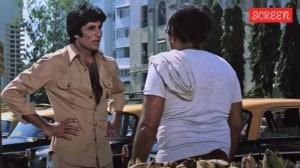Click here to follow Screen Digital on YouTube and stay updated with the latest from the world of cinema.
Shivaji Satam’s exit marks the end of an era: How CID defied trends and critics for 27 Years
27 years, one formula, zero replacements. Exploring how a formulaic crime show CID became India’s most enduring TV ritual.
 It's OG CID characters vs the new ACP. (Photo: IMDb)
It's OG CID characters vs the new ACP. (Photo: IMDb)Written by Hemant Shukla
Greek philosopher Heraclitus once said, “Change is the only constant.” From OTT adaptations to sequels of classic shows, Indian television has seen immense transformation. Amid these shifts, one show remained a constant: CID. Recently, Sony TV, in an X post, announced the symbolic “end of an era” by bidding farewell to ACP Pradyuman, one of the prominent characters of the show, portrayed by Shivaji Satam for nearly three decades, a character that has become iconic. “In loving memory of ACP Pradyuman… a loss that will never be forgotten,” read the post. For fans, this meant more than just a character’s exit. For them, it was the end of a legacy.
ACP Pradyuman is now a household name. Every 90s kid and their families can recall his iconic lines like “Daya, darwaza todo” (Daya, break the door open) and “Kuch to gadbad hai.” (There’s something fishy). CID, for Indians, was a ritual, a habit.
But how did a crime drama with outdated forensics, recycled plots and exaggerated storytelling sustain for nearly three decades, and create a unique, multi-generational audience for itself? The answer lies in its simplicity, iconic characters and emotionally accessible narrative, a formula that helped it outlast trendier rivals in a fast-changing industry.
As the show loses its anchor, lead and significant character, let’s take a deep dive into how CID, with all its imperfections, stayed relevant and sustained 27 years in an era of disposable entertainment.
The perfectly imperfect formula
Launched in 1998 and created by B P Singh, CID operated on a simple yet almost mythical formula:
A crime occurs. ACP Pradyuman and his team — inspector Daya (Dayanand Shetty), senior inspector Abhijeet (Aditya Srivastava), and Dr Salunkhe (Narendra Gupta) — investigate the crime. Forensics find evidence, suspects are chased, doors are broken, and justice is served within one or two episodes. Invariably, finale episodes ended with the line “Tumhe toh fassi hogi fassi…” (You will get the death sentence). What mattered is that in the end, moral clarity reigned supreme. Viewers were left with a moral sense of responsibility and fulfillment of guessing the culprit.
There was little room for psychological nuance or gritty realism in CID. DNA results arrived faster than tea; suspects confessed under a stern gaze. Episodes, sometimes, bordered on the absurd, with disappearing corpses, invisible killers, or fingerprint matches with just a stare at the screen that turned green. The villains were apparent, the good –– and the good people –– always prevailed, and science bowed before storytelling. Yet the absurdity became part of the appeal. Viewers tuned in again and again, comforted by the familiarity.
Why it worked
CID worked because of various reasons. Here’s exploring some of them:
Familiarity and stability
In a world of shifting trends, CID offered comforting predictability. One could tune in after a year and pick up right where they left off. The constant cast and moral clarity created deep emotional comfort — a reliable escape when OTT choices overwhelmed.
Characters larger than plots
The show wasn’t about crime at all. It was about who was solving it. ACP Pradyuman’s wisdom, Abhijeet’s righteous charm, Daya’s loyalty, Dr Salunkhe’s science and Fredricks’s (Dinesh Phadnis) comic relief formed an ensemble that viewers grew attached to.
Multi-generational appeal
CID transcended age groups. Kids loved the action, comedy and suspense, adults the camaraderie between the characters and grandparents appreciated the clean –– violence-free, obscenity-free, morally clear storytelling where in the end, justice prevailed. Only a few other Indian shows –– Ramayana, Mahabharata, Shaktiman, Buniyad, Kahaani Ghar Ghar kii, Shararat, Khichdi –– were able to achieve such cross-generational loyalty.
Meme magic
In the age of memes and GIFs, CID thrived again. From “tumhe toh faansi hogi” to “CID waale un tak pohonch hi jaate hain,” its lines found new life online, keeping the show relevant long after its prime.
Flaws that became features
CID never aspired to be CSI or Mindhunter. It leaned into its absurdities and delivered justice with sincerity. Its imperfections were part of its charm — a throwback to simpler storytelling.
A departure that feels like a finale
With Satam stepping down, a chapter truly closes. Actor Parth Samthaan is set to join as ACP Ayushmann, but few can replicate the legacy of ACP Pradyuman — a figure who became more than a character, embodying a nation’s nostalgia and belief in moral clarity.
In an age where content tries to chase trends, CID taught us that staying the same — and sometimes breaking the same door — can be the secret to staying unforgettable.


Photos
Photos


- 01
- 02
- 03
- 04
- 05





























